Episode 116 Show Notes
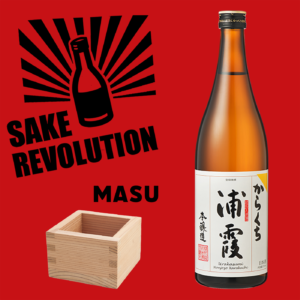 Episode 116. Week in and week out, our standard gear for tasting and evaluating sake is a simple wine glass. This works really well and almost everybody has one nearby. But in Japan, there are a wide variety of shapes, materials and sizes used to make cups for drinking sake. That got us wondering if we should take some other cups out for a test drive and compare them to our usual stemware. This week we are exploring a real square in the world of sake cups – the masu. Born as a box-shaped measuring cup for rice and re-imagined as a fragrant wooden cup for drinking sake, the masu is a totally unique vessel and one that you will find in Japanese sake bars and izakaya across the world. Have you tried drinking your sake out of a square box? And how does that masu stack up against our trusty wine glass? Listen now to our third sake vessel smackdown! #sakerevolution
Episode 116. Week in and week out, our standard gear for tasting and evaluating sake is a simple wine glass. This works really well and almost everybody has one nearby. But in Japan, there are a wide variety of shapes, materials and sizes used to make cups for drinking sake. That got us wondering if we should take some other cups out for a test drive and compare them to our usual stemware. This week we are exploring a real square in the world of sake cups – the masu. Born as a box-shaped measuring cup for rice and re-imagined as a fragrant wooden cup for drinking sake, the masu is a totally unique vessel and one that you will find in Japanese sake bars and izakaya across the world. Have you tried drinking your sake out of a square box? And how does that masu stack up against our trusty wine glass? Listen now to our third sake vessel smackdown! #sakerevolution
Skip to: 00:19 Hosts Welcome and Introduction
Welcome to the show from John and Timothy
Skip to: 03:01 Sake Vessels: Masu
What is a Masu?
An “ochoko” could most easily be defined as a small sake cup. Often, they are smaller in size and generally have smooth sides. Ochokos can be made out of many materials including: ceramic, metal, glass and wood/lacquer. It’s not an exaggeration to say that this is the most common type of sake cup.

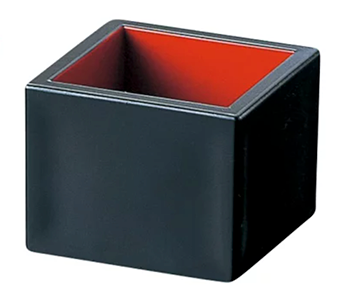
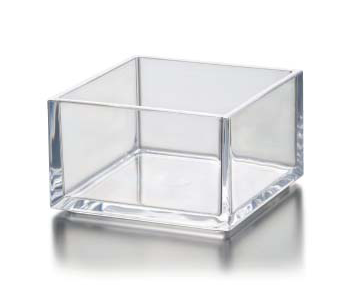
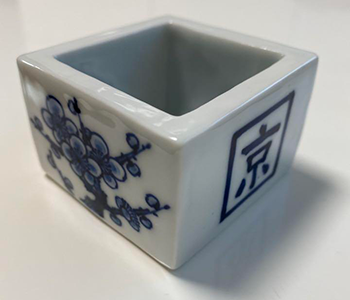
Overpour of sake into a masu:
Download our Sake Vessel Cheat sheet:
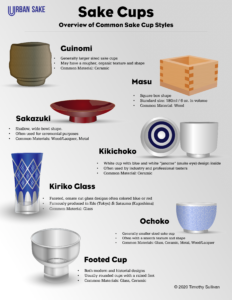
Skip to: 15:40 Sake Introduction and Tasting: Urakasumi Karakuchi Honjozo
Urakasumi Karakuchi Honjozo
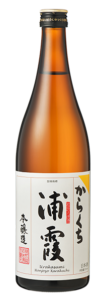
Brewery: Saura Co.
Classification: Honjozo
Acidity: 1.2
Alcohol: 15.5%
Prefecture: Miyagi
Seimaibuai: 65%
SMV: +5.5
Rice Type: Manamusume
Brand: Urakasumi
NOTE: Use Discount Code “REVOLUTION” for 10% off your first order with Tippsy Sake.
Skip to: 29:02 Show Closing
This is it! Join us next time for another episode of Sake Revolution!
Support us on Patreon
 Now there is a new way to support Sake Revolution. Join us on Patreon! Patreon is an online platform that allows you to support your favorite creators by subscribing to a monthly membership. At Sake Revolution, we’re offering two tiers, each with its own perk. If you enjoy our sake podcast, if you are able, please consider supporting this labor of sake love! See below to learn about our Patreon support levels.
Now there is a new way to support Sake Revolution. Join us on Patreon! Patreon is an online platform that allows you to support your favorite creators by subscribing to a monthly membership. At Sake Revolution, we’re offering two tiers, each with its own perk. If you enjoy our sake podcast, if you are able, please consider supporting this labor of sake love! See below to learn about our Patreon support levels.
-
Sake Enthusiast
Have you ever wanted to sip along with us as we taste our sakes on the podcast? Now you can! As a Sake Enthusiast patron, you’ll get the inside track and know in advance which sakes we’ll be featuring on the show. This allows you to get them on hand and sip along with us while you listen.
-
Sake Otaku
As a Sake Otaku supporter of the pod, you’ll get access to all the Sake Enthusiast intel along with access to a monthly live zoom Sake Happy Hour taking place the first Weds of every month at 9pm ET (6pm PT). Visit with us live on zoom! Come with all your questions and suggestions and enjoy a relaxed and fun Happy Hour with with us as we all sip sake together!
Episode 116 Transcript
John Puma: 0:21
Hello, everybody. And welcome to Sake Revolution. This is America’s first sake podcast, and I am one of your Intrepid hosts. My name is John Puma and I am the administrator over at the internet sake, discord that fun place to hang out and talk about sake. And on this show where we feature many luminaries, including sake, samurai, I am the sake otaku.
Timothy Sullivan: 0:49
And I’m your host Timothy Sullivan. I’m a sake samurai sake educator, as well as the founder of the Urban Sake website and every week, John and I will be here tasting and chatting about all things sake and doing our best to make it fun and easy to understand. Hey John,
John Puma: 1:07
Tim, how are you?
Timothy Sullivan: 1:08
I’m doing good. How are you doing?
John Puma: 1:11
Oh, you know how it is another week and another episode and having we’re living the dream, we’re having a good time here. We’re getting to share our love of sake every week
Timothy Sullivan: 1:21
we sure are.
John Puma: 1:22
and having a good time doing it.
Timothy Sullivan: 1:24
And, uh, today is just us. No guests.
John Puma: 1:28
Yeah. It’s weird. Sometimes it’s so quiet. It’s uh, we don’t have to do any intros for people. We know who we are. It’s great. Um, and, uh, and I believe I’m not mistaken. And, and if I am, that was a great time to tell me, uh, that we are getting back to one of our, one of our series that we haven’t touched on in a little bit.
Timothy Sullivan: 1:50
Yes. We’re gonna be looking at sake vessels again this week
John Puma: 1:56
Mm.
Timothy Sullivan: 1:57
series on sake cups and sake wares. And we have a fun one. This is one I’ve been looking forward to,
John Puma: 2:08
Mm. And I, I think this is one that there’s a lot of. I don’t wanna put this. I think there’s a lot of intrigue around this vessel. I think a lot of people hear about it and they find it very interesting, especially when they first see somebody using it. And also a little bit of confusion comes from seeing it. And, uh, and I think that, I think that this is gonna be very informative for a lot of our listeners.
Timothy Sullivan: 2:36
I will say, this is a vessel that even when I just started drinking sake, I remember seeing it out and about at restaurants and it’s something, this is a vessel you will not see in other types of restaurants. This is like something you’ll see in Japanese restaurants.
John Puma: 2:54
Yeah, no. Yeah. This is, uh, most definitely a, a Japanese focused, a, a sake focused
Timothy Sullivan: 3:01
Vessel. Yes. So today we are taking on the topic of sake, MASU, M-A-S-U MASU.
John Puma: 3:12
Right. And that is the box
Timothy Sullivan: 3:16
Yes. So John, for our listeners who may not know what a MASU is, can you describe what. Typically you would see if you saw MASU on a table at a Japanese restaurant.
John Puma: 3:28
So, uh, MASU is a small box, a Cedar, usually Cedar, usually wooden box. Oftentimes these days you’ll see them as plastic boxes as well, and when you see these at sake bars, and izakayas, you may. Uh, see them put down and sometimes the server will put a glass in the box and then pour the sake into the glass and sometimes overflow it into the box. You may also see people just pour sake directly into the box and sip it out of that and wonder, wait a minute. How are they supposed to drink sake, sake out of a square, but that’s definitely something we’re gonna go over and.
Timothy Sullivan: 4:07
Wow. You’ve covered everything.
John Puma: 4:11
But no, there’s a lot to this. There’s this depth here. I’m just getting the surface. I’m getting the surface level description.
Timothy Sullivan: 4:16
it’s, a Cedar wooden box. Open on the top. And it’s about three and a half inches wide, two inches tall square. And yeah, the, the wood that is most often used for these is a Japanese Cedar. So it’s a fragrant wood and that is the most traditional and most common. Type of MASU that you’re gonna see. And as you mentioned, John, these come in plastic glass, I’ve even seen ceramic MASU as well,
John Puma: 4:51
Really, I don’t know I’ve ever seen glass or ceramic, but that sounds really cool.
Timothy Sullivan: 4:56
There they’re, this box shape is traditional in Japan.
John Puma: 5:01
right now. Why what’s the story with the box? Exactly. We know they use it. We know it gets, we know it gets utilized in, in sake. We know that it’s we see it in sake bars and izakayas, but why.
Timothy Sullivan: 5:14
Yeah. So the, the box shape is actually a descendant of a measuring cup.
John Puma: 5:23
interesting.
Timothy Sullivan: 5:24
So we’ve, we’ve talked about measurements and serving sizes on the podcast before I think, and there’s a serving size called a go one. Go.
John Puma: 5:34
Yes, we have definitely talked about the go
Timothy Sullivan: 5:37
the go a go is a single serving of sake in Japan. And when you order sake in Japan, very often, you’ll order it by the go one, go two, go three, go. And it’s about six ounces of sake or 180 milliliters. So the internal volume of a standard traditional MASU box is 180 milliliters again, about six ounces. So. Originated I’ve been told this originated as a measurement for rice. So when you would buy rice or if you were paid in rice, you know, they would scoop out using the MASU as a measuring cup. And MASU is a measurement, not only of liquid for sake, but also for rice. It’s kind of a descendant of a measuring cup for, uh, purchasing rice and they had a lot of them sitting around and it morphed into a drinking vessel. So traditionally made from Cedar and that Cedar really does affect the flavor of the sake.
John Puma: 6:54
Yeah, I kind of like that. We went from, uh, measuring, uh, rice with this and now having, you know, rice
Timothy Sullivan: 7:05
liquid rice.
John Puma: 7:06
liquid. Yes.
Timothy Sullivan: 7:08
now
John Puma: 7:08
I think that’s fun. I like
Timothy Sullivan: 7:10
Yeah. And John, you mentioned how to drink from a square box.
John Puma: 7:15
Yeah, that is, uh, I think that when people first see the MASU, that’s the first thing that pops in their head is like, well, that’s interesting. How, how are you supposed to drink out of that?
Timothy Sullivan: 7:28
Very carefully is the answer
John Puma: 7:29
yes.
Timothy Sullivan: 7:31
I do wanna give everyone a warning though.
John Puma: 7:34
Uh,
Timothy Sullivan: 7:36
MASU made of wood are very, very hard to keep sanitized and clean.
John Puma: 7:43
It is. I mean, it’s, it’s it’s wood. It’s not, it’s not meant to like, yeah.
Timothy Sullivan: 7:49
And it’s not, it’s not finished with anything like the ma that I have. I have a brand new MASU with me that was given as a gift and it has never been used, but the wood is not finished in any way. There’s no
John Puma: 8:03
now.
Timothy Sullivan: 8:04
wax coating or anything on here. It’s raw wood. So if you go to a restaurant and they serve you out of a wooden MASU, that’s been. Put through the dishwasher a whole bunch of times. I always, when I see that hit the table, I’m like, no, bring me a wine glass, please. I don’t like to drink out of used wooden Masus, but you mentioned they make them out of lacker and plastic. And we talked about the other, you know, there’s glass and ceramic as well. Now those you can sanitize very easily and those are really fun to drink out.
John Puma: 8:41
Yeah, but unfortunately, um, and it’s something that you had pointed out earlier is that when you do go with the plastic or the lacquer or anything like that, you are depriving yourself of one of the factors that come in with the, when you have it out of the Cedar masu. And that is that the Cedar really does influence the flavor of the sake you’re having. It’s primarily in the aroma, but the aroma’s gonna influence how you, how you experience it. And so you’re, you know, it is, it’s a different experience than just having the sake out of any other kind of vessel. Cuz if you have it out of glass, glass, isn’t imparting any kind of aroma to it, hopefully. Uh but the MASU very much is, and it’s going to impart a little bit of that, Cedar to it. And it’s gonna, you know, it’s kind of like a, a aromatic cocktail almost, cuz it is changing it up and it’s mixing with the sakes aroma.
Timothy Sullivan: 9:35
Yeah, Japanese Cedar is I’ve read that it’s actually a relative of the Redwood tree and it is very oily type of wood. And those oils get into the sake and really influence that flavor in aroma. I will tell you where most Japanese people are gonna see a masu like this at a wedding.
John Puma: 9:59
Ah,
Timothy Sullivan: 10:00
I think if you talk to the average Japanese person and ask them where they got their last MASU, or last time they saw a MASU, these are often made and then printed with something like they, they print the wood so that there’s like, if you have a wedding or a celebration, you would make fresh, clean masus for everybody at the party. And then when you pour the sake or comes out of the barrel, everyone drinks from their own clean, fresh masu. And then you take it home as a party favor. So that’s that’s awesome.
John Puma: 10:37
If, if I recall correctly, you had MASU wedding
Timothy Sullivan: 10:41
I did have masus at my wedding. I
John Puma: 10:44
aha. I do remember something from your wedding
Timothy Sullivan: 10:46
I didn’t have time to get them branded. So they were, they were blank masus,
John Puma: 10:52
Hmm.
Timothy Sullivan: 10:54
Yeah. So everyone got a fresh, clean MASU and there was sake being poured into them. And I wanted to bring that element of Japan to my wedding, and I thought it was really fun. I hope you enjoyed it.
John Puma: 11:07
I did I, I had a great
Timothy Sullivan: 11:08
Good. Good, good. So, John, I’ve got some masus here. How about you?
John Puma: 11:13
I, I also, coincidentally who knew, um, I have some masus and I also have a wine glass.
Timothy Sullivan: 11:18
Okay. I have a wooden fresh, clean wooden, Japanese, Cedar MASU, and I have a plastic MASU and we have a sake and we’re going to do a little taste test.
John Puma: 11:34
Yeah, we’re gonna drink out of all three of these vessels. So while we’re preparing the sake, Tim, I have a question for you as a sake educator. So we often, when we encounter the MASU, we also encounter the glass inside the MASU and the pour over and all of that. Could you, um, let our listeners know, like what’s, what’s the story with that?
Timothy Sullivan: 11:57
Yes. So there’s a pour over tradition in Japan. Some restaurants in the states do this as well. You’ll get a saucer or a MASU. They’ll put a glass inside of it. They’ll pour sake. And then they’ll overflow the glass into the saucer or into the MASU. And the word always is that this is a sign of hospitality and they’re giving you more than you paid for. And they’re literally overflowing your cup as a sign of welcome and prosperity. Some people may think this is an ancient Japanese tradition, but I’ve actually read that. Custom was invented in the post-war period. So, yes.
John Puma: 12:41
Wow.
Timothy Sullivan: 12:42
when, uh, salary men started going out to izakayas after work in the post-war period, this way of overflowing the glass started at that time. So this is not an ancient Japanese tradition at all.
John Puma: 12:58
wow. That is so interesting. I did not see, this is something I did not know. I know what the pouring over why, but I also assumed it was older than, than post-war. That’s very fascinating.
Timothy Sullivan: 13:08
that’s what I’ve read. That’s what I think the scoop is. And the second question that always goes along with this is how do you drink it? How do you drink it? You’ve got a MASU filled with sake and inside the MASU is a glass filled with sake. What on earth are you supposed to do? So, John, how do you handle this situation?
John Puma: 13:26
So, what I like to do when I have mine is, I will take the whole thing together at the the MASU with the glass in it together. And I will first just sip. The glass a little bit, just to make sure nothing’s going anywhere. And then once I have that done, I’ve got a bit of clearance. I’m gonna pull out the glass and I’m gonna sip over the box with the
Timothy Sullivan: 13:46
Okay.
John Puma: 13:47
And then the real big question is, well, what do I do when I run out of sake in my cup, how do I get the MASU sake back into the cup? And that is, I will, take the cup out of the MASU and I will pour via the corner. The rest of the sake into the glass. I prefer to drink it outta the glass generally.
Timothy Sullivan: 14:07
Yes.
John Puma: 14:08
And so I will, I will generally pour it in.
Timothy Sullivan: 14:10
Yeah, that sounds like an a plus procedure to me. I
John Puma: 14:14
I’m glad it’s approved.
Timothy Sullivan: 14:15
I pull the glass out of the MASU. I’ll sip on it until there’s enough room that I can pour the dripped sake into the glass. And then I drink out of the glass. That’s that’s I think the way that is a good way to handle that situation.
John Puma: 14:31
way to go.
Timothy Sullivan: 14:31
I think so.
John Puma: 14:33
it’s funny. There is a, an izakaya that I like to go to in, in Tokyo. And I know you’ve been there too. Uh, and it’s, uh, in, uh, in Shinjuku on the west side of, uh, the station and it’s called, uh, and at donjaka. Are very generous. And they know that the idea of the generous pour is kind of, you know, it’s expected that it’s gonna fill up the box. So what they do is they put the glass in, they pour in the glass, fill the glass, keep pouring, and then fill the masu. And then when the sake begins, overflowing and hitting the table is when they stop. And that is the generous pour
Timothy Sullivan: 15:15
That’s an aggressive pour.
John Puma: 15:17
and it, and I go to this place like every year and it happens every year. So it wasn’t like this, like one off, it’s such a weird thing. I’ve never seen another place do that before, where they’re like, when it hits the table, that’s the generosity. And in my mind, I appreciate the gesture, but they’re wasting sake cuz I can’t drink that.
Timothy Sullivan: 15:35
yes, that is not sake brewer approved.
John Puma: 15:40
No, I would imagine it’s not, but yeah. So, we have our vessels. Let’s talk about our sake, the sake is, from the brand Urakasumi, which is a familiar brand, I think, to, uh, to some of our listeners, and the name of the brewery is, Saura Shuzo in Miyagi Prefecture, and this is a honjozo, using, Manamusume rice and Tim, I unfamiliar with this rice. This is a new rice to me. We’ll we’ll to chat about that in a bit. the, uh, yeast is apparently just a inhouse yeast, the, sake milling percentage of that manamusume is 65% remaining. Alcohol percentage is 15 and a half sake meter value. Is a plus 5.5. So looking a little bit on the dry side here. And the acid is 1.2. Now they advertise this as a honjozo karakuchi so they’re saying this is dry,
Timothy Sullivan: 16:35
this is their dry style. Yeah, for
John Puma: 16:37
sure yeah, And I’ve, I’ve actually never tasted this particular sake from them before. So I’m excited.
Timothy Sullivan: 16:43
Yeah. So you mentioned this, uh, manamusume rice. I don’t know a lot about it myself, but I know that they use this rice for their Junmai as well. So this is a rice variety that. If I had to guess, I would say probably comes from Miyagi Prefecture and, uh, this is used for several of their sakes. So super, always excited to try a new rice variety. And, uh, Urakasumi is such a historic brewery. It’s been around for hundreds and hundreds of.
John Puma: 17:22
Hmm, so breaking news, manamusume was apparently bred in 1997, in Miyagi and is a brewery. Rice is a sake rice, but it’s also an eating rice. Yeah. So it’s a, it is a, it’s a switch hitting rice and, uh, yeah, so that’s exciting. I, you don’t get that a lot. I think that’s really interesting. I think that’s a fun thing when they can make a rice that can do more than one role. It really ups the value to the rice farmer.
Timothy Sullivan: 17:55
Yeah. And my takeaway when I hear that is it’s an eating rice and a sake rice. Usually when I experience that on the palate, that has a more robust flavor to it. So usually it’s gonna imply to me a little bit more of a rice-y flavor. So that’s what I’m, that’s what I’m expecting. So we’ll see.
John Puma: 18:19
Yeah. And, and I think that, um, Urakasumi traditionally gives you a little bit of rice on the palate when you’re drinking their sake. So it’d be very interesting to see if this one carries on that, that, uh, kind of tradition. So I think without any further ado, let’s get our bottles open. Uh, first gonna put some of this in the wine glass. So I put some of this in the wine glass, just so we can get a little bit of a baseline. Uh, this is, you know, how we typically experience our sakes. And this is gonna tell us how we would typically experience this sake. And, um, Tim I’m, I’m swirling this around a little bit and the aroma is telling me that we’re probably right about that rice flavor.
Timothy Sullivan: 19:14
Yeah, it’s rice refined, but rice I’m taking a sip. Hmm. Very smooth, dry overall, but it has a little bit of heft to it. This is like a really great dry food sake. I think.
John Puma: 19:33
Oh yeah. This, this desperately wants some food. Um, but it is nice. It’s tasty. It is still very drinkable without,
Timothy Sullivan: 19:41
Yeah.
John Puma: 19:41
and smooth as you, as you mentioned.
Timothy Sullivan: 19:43
Yeah. Smooth, really classic, dry sake. It lives up to the karakuchi moniker for
John Puma: 19:48
Mm-hmm absolutely
Timothy Sullivan: 19:51
Okay, John, I can’t wait any longer.
John Puma: 19:53
Okay. our Cedar is next.
Timothy Sullivan: 19:55
Yep. So our wooden MASU and, uh, I am ready to inaugurate this. I’m gonna go ahead and pour some of my, Urakasumi Honjozo into.
John Puma: 20:05
this. This box smells amazing.
Timothy Sullivan: 20:08
Mine smells great too.
John Puma: 20:09
yeah.
Timothy Sullivan: 20:12
Ooh.
John Puma: 20:14
Yeah. All right.
Timothy Sullivan: 20:16
So this is a wide open box. This is not like a wine glass where the aroma is focused, so it may be a little more difficult.
John Puma: 20:26
It’s certainly tricky. Um,
Timothy Sullivan: 20:29
Smells good. It smells Woody.
John Puma: 20:31
I have to say that for me, the aroma is somewhat dominated by the box. Like I’m getting Cedar, I’m getting that, that, that aroma on the honest.
Timothy Sullivan: 20:41
Yes. All right.
John Puma: 20:44
It is overshadowing the sake that,
Timothy Sullivan: 20:46
Yes. when the wood gets, uh, touched by the sake, it really brings out the aroma of the wood. So where it’s getting wet, that’s really where the aroma compounds are gonna come off the wood and. Really bring that aroma forward. All right. So let’s go to the corner.
John Puma: 21:07
Yes.
Timothy Sullivan: 21:08
sip out of the corner of the box.
John Puma: 21:11
yep. Any corner guys doesn’t matter which
Timothy Sullivan: 21:17
Wow.
John Puma: 21:18
Tim. I think I like this better out of the box
Timothy Sullivan: 21:21
It’s like a Taru light,
John Puma: 21:24
yeah. And it’s yeah, it’s got more, um, it’s got more it’s it’s brighter. Is that the word I wanna
Timothy Sullivan: 21:32
Mm. Okay. So we have to mention Taru sake, which we featured on the show before we had a whole episode about Taru sake, that’s Cedar barrel aged sake. Usually they age about two weeks in a Cedar barrel. And that has a very strong Cedar aroma. Now this has been in contact with Cedar for about 60 seconds.
John Puma: 21:58
yes.
Timothy Sullivan: 21:58
and there is that Cedar. Aroma, but it’s a whisper.
John Puma: 22:04
Mm-hmm
Timothy Sullivan: 22:05
nice.
John Puma: 22:07
the sake becomes so. Clean and light, the aroma becomes very woody, but the sake taste becomes so, so clean.
Timothy Sullivan: 22:20
I couldn’t agree more, John, the aroma is dominated by the wood smell, but it’s just a whisper on the palate. It’s just a hint of that. Woodiness and I really like it. I like it.
John Puma: 22:35
Yeah. I think that whisper on the palate is just enough to make the entire taste so much lighter and just, just more subtle, almost. It’s so interesting, it is, palpably different.
Timothy Sullivan: 22:52
Yeah,
John Puma: 22:53
Hmm. Well, be hard to top that,
Timothy Sullivan: 22:56
got one more. We have our plastic MASU,
John Puma: 23:01
Yes. I’ll put a little bit in there into the plastic. masu
Timothy Sullivan: 23:11
Okay. So we have, uh, let’s describe this for our listeners. So this is a black plastic MASU with a red reddish lining to it, same dimensions as the wooden one, but it’s just made out of a, you know, plastic
John Puma: 23:26
yeah. Just mean I have plastic. Um, now the first thing I’m noticing is, is as you pointed out, this is not a wine glass. It is not easy to the aroma up to your nose.
Timothy Sullivan: 23:37
There’s almost no aroma, right?
John Puma: 23:40
It depends on the angle, but if I put my nostrils, I have a, I have a pretty big nose. Tim. If I put my nostrils over the corner, I can get kind of exactly what I got from the wine glass.
Timothy Sullivan: 23:52
Really?
John Puma: 23:53
So I can get some of that rice-y note, but it’s a challenge. It’s not
Timothy Sullivan: 23:58
the surface area is so much bigger.
John Puma: 24:01
Yeah.
Timothy Sullivan: 24:02
Yeah.
John Puma: 24:03
And it’s honestly, it’s not that comfortable putting a corner of a piece of plastic. You. Up to your nose.
Timothy Sullivan: 24:10
you have to be careful, John, the, uh, the workers’ comp at sake revolution is very minimal. I don’t want any, masu accidents.
John Puma: 24:19
Oh, uh, oh, uh, alright, so, uh, let’s give it a taste
Timothy Sullivan: 24:27
Mm.
John Puma: 24:28
and this is very in line with the wine glass experience.
Timothy Sullivan: 24:32
Yes.
John Puma: 24:33
It’s not as, um, not as aromatic, uh, obviously, and that’s gonna influence the taste a little bit, but, it’s a tiny bit more subtle, I guess, but it’s not like it’s, I kind of really like this out of the wooden MASU. I think that’s for me, the way I enjoyed this sake the most. And, and of course this is this sake without any food, like, and, and we talked about earlier, this sake is practically begging for some kind of, uh, rich, um, maybe some like some, some good meat, red meat with this.
Timothy Sullivan: 25:05
Yeah, it’s really shocking. I enjoyed the wooden masu as well, and I was sure that I would not like it. Like I came in thinking I was not gonna like it.
John Puma: 25:16
what are we wasting our time with
Timothy Sullivan: 25:18
It’s really lovely. It’s really nice. And the plastic masu is fun, but it doesn’t, there’s no complexity to the sake. It tastes the flattest out of all of them.
John Puma: 25:30
it does. It really does, But I think that the plastic masu for the most part, is there for your, for your overpour, for your,
Timothy Sullivan: 25:37
Hmm.
John Puma: 25:38
your apparently only, only 70 year tradition which is, Hey, you know what, 70 year tradition’s not bad. but yeah, I, I think that, I think that you’re right, the, the plastic isn’t bringing a lot to the table here.
Timothy Sullivan: 25:53
it, it doesn’t help the aroma get to your nose. And so much of what we experience as flavor really comes through our. Old factory system through the nose and the wine glass really helps channel that. And the MASU has its own unique experience. So the, the kind of neutral plastic MASU really allows the most aroma to escape. And it’s really fun to drink out of. But I think as far as giving the sake a boost of some kind, it’s really not the most dynamic. What do you think?
John Puma: 26:36
Yeah, I, it is just it’s, it’s really interesting to me that this ended up being our, our preferred method, but it’s, you know, we’re a hundred percent in agreement on this is, the most enjoyable way of the three we’ve done today.
Timothy Sullivan: 26:50
Yeah, this MASU is really super fun, way more fun than I thought it would be. I’ve had sake from a MASU before
John Puma: 26:59
Well, you know, we walked into this with you being a, you were a bit of a MASU hater when we started this
Timothy Sullivan: 27:04
well Yeah, I’m in a restaurant. I’m a wooden MASU hater, but at a wedding at a party, when you get a fresh MASU, I’m a MASU lover officially.
John Puma: 27:17
so this was fun. And, and I, Tim, I like the episodes where you get thrown for a loop a little bit where you got, you get surprised. And, uh, and I don’t, I don’t get to see you surprised very often. So this was nice. This was very pleasant.
Timothy Sullivan: 27:31
Yeah, I wasn’t sure. How Urakasumi was gonna marry with the MASU, but having a fresh MASU just made all the difference in the world. And it really brings me back to all the Japanese parties and weddings I’ve been to where you get this very distinct, uh, Japanese, Cedar aroma, and so many memories are attached to smells in aroma. It’s really funny. Like I’m thinking about all these really fun events. I’ve been to where they’ve served sake from MASU as a celebratory thing. And it’s really bringing me back. It’s really fun.
John Puma: 28:09
yeah, this was a lot of fun. And Tim, thank you so much. This, this series on vessels has been, has been really informative for me. Uh, I don’t honestly, you know, as a sake drinker, I don’t think about the vessels a whole lot. I really focus on my wine glasses and I, I think I get a great experience from them. But going through this with you has been so interesting for me and, you know, every one of them, I, I get a little something out of it. And so this has been a lot of fun. Thank you again for that.
Timothy Sullivan: 28:33
Yeah. Well, thank you for tasting as always. And I think the vessels are really fun, especially this one, because as we mentioned at the beginning, this is a vessel. That you’re not gonna see in any other restaurant
John Puma: 28:46
No,
Timothy Sullivan: 28:47
this is true Japanese culture in a cup, which I love
John Puma: 28:50
yep. And you’re going to experience this. If you’re going to have a lot of sake at restaurants, this is gonna come your way one day. And I hope that we armed you with some knowledge for that eventuality.
Timothy Sullivan: 29:02
All right. Well, John, great to taste with you. I want to thank all of our listeners for tuning in, and I also wanna especially say hello and thank you to all of our patrons. We have a wonderful community at Patreon who support us and we appreciate them. So, so much. If you would like to learn more about supporting our show through Patreon, you can visit patreon.com/sakerevolution.
John Puma: 29:29
That is right. But apart from that, there are other ways you can support us. One of them is to review our show over on your podcast platform of choice, like iTunes or. Stitcher, Spotify, whatever you’re into, uh, it gets the word out there gets the, bar raised. so please grab your MASU. And until next time, remember to keep drinking sake and Kanpai
Timothy Sullivan: 29:55
Kanpai.